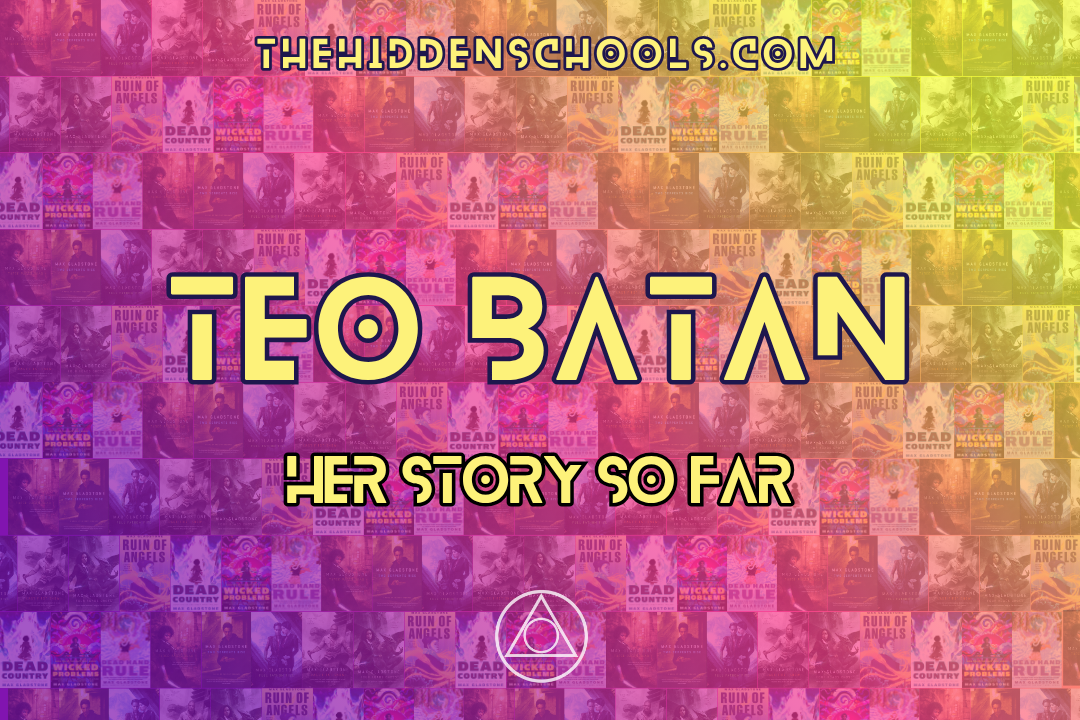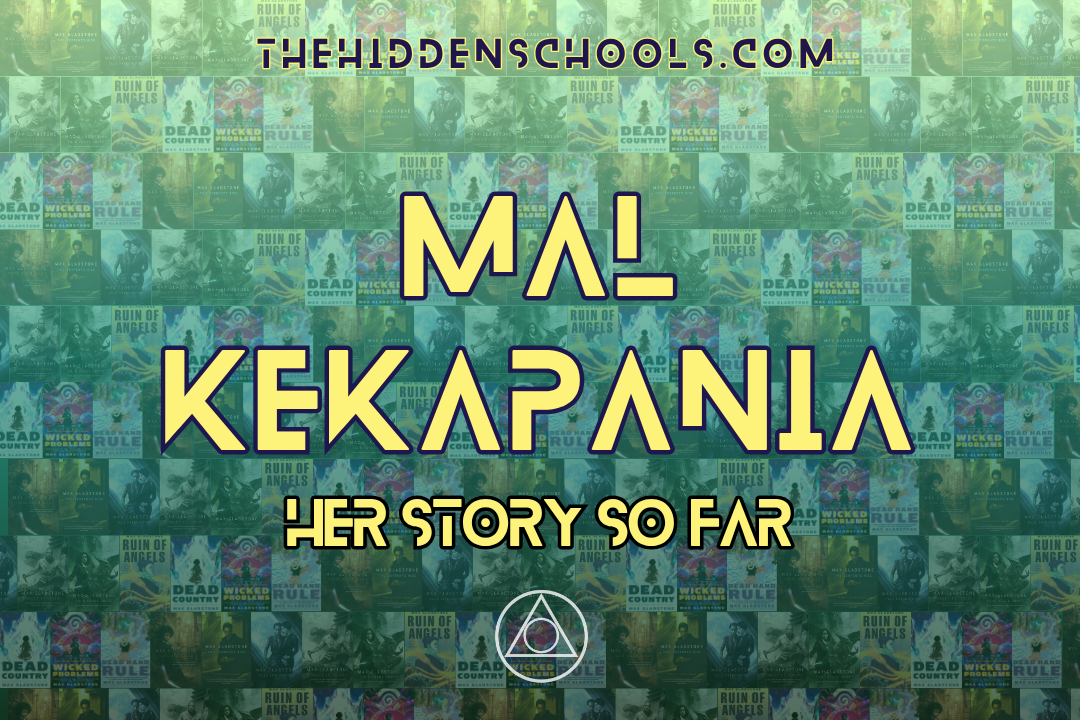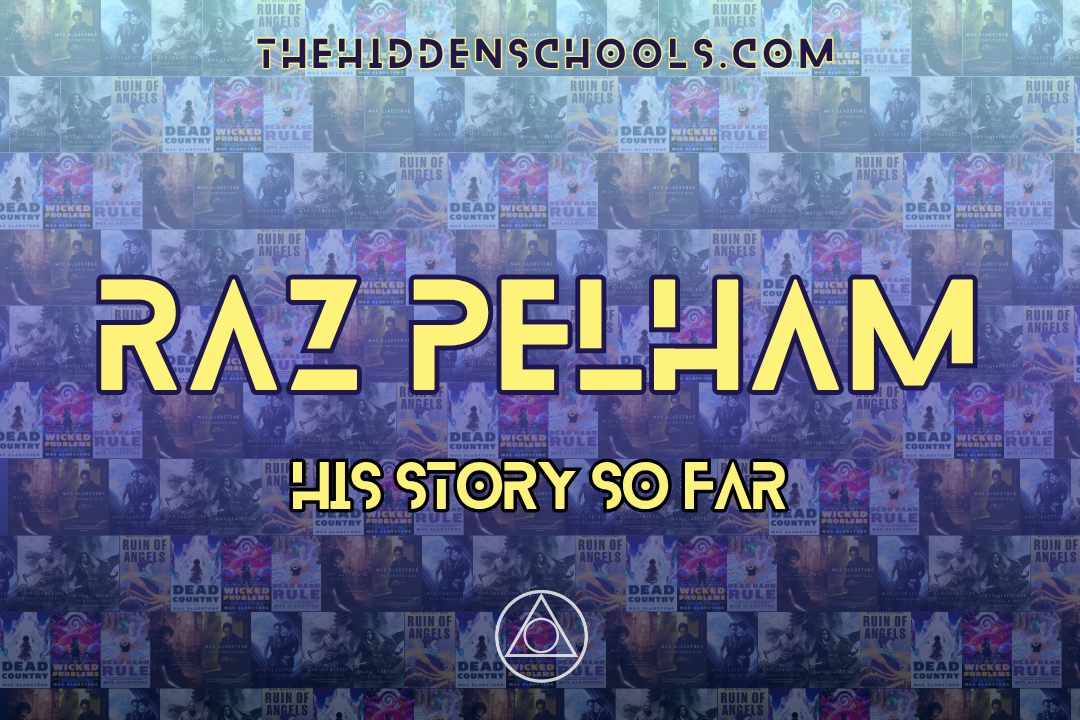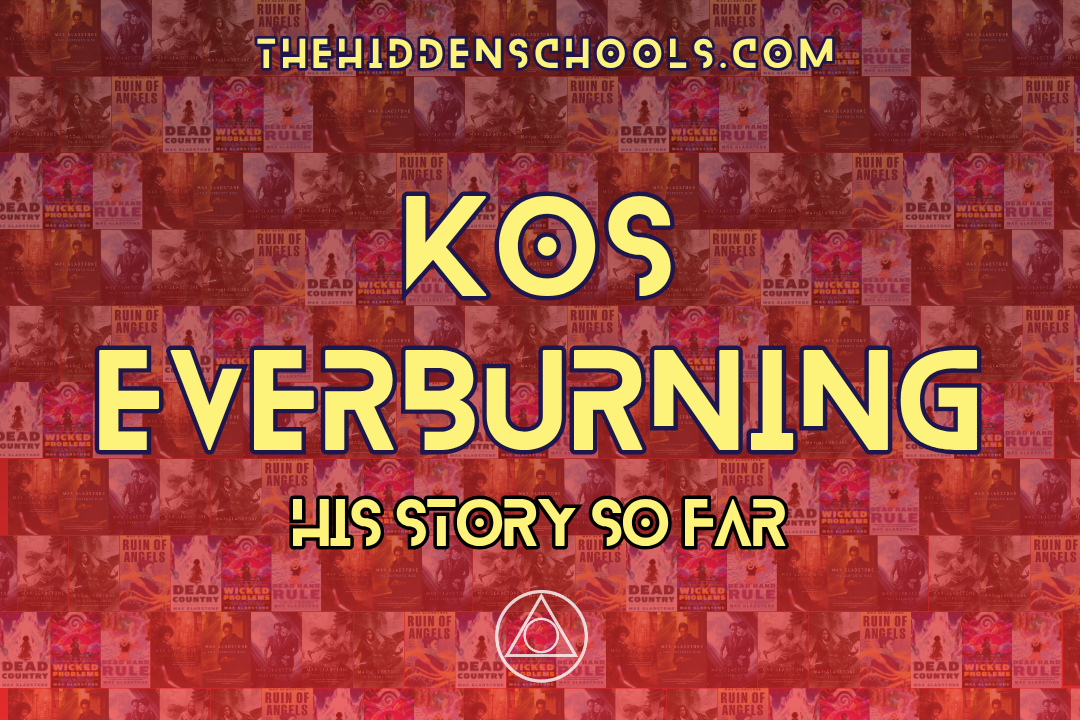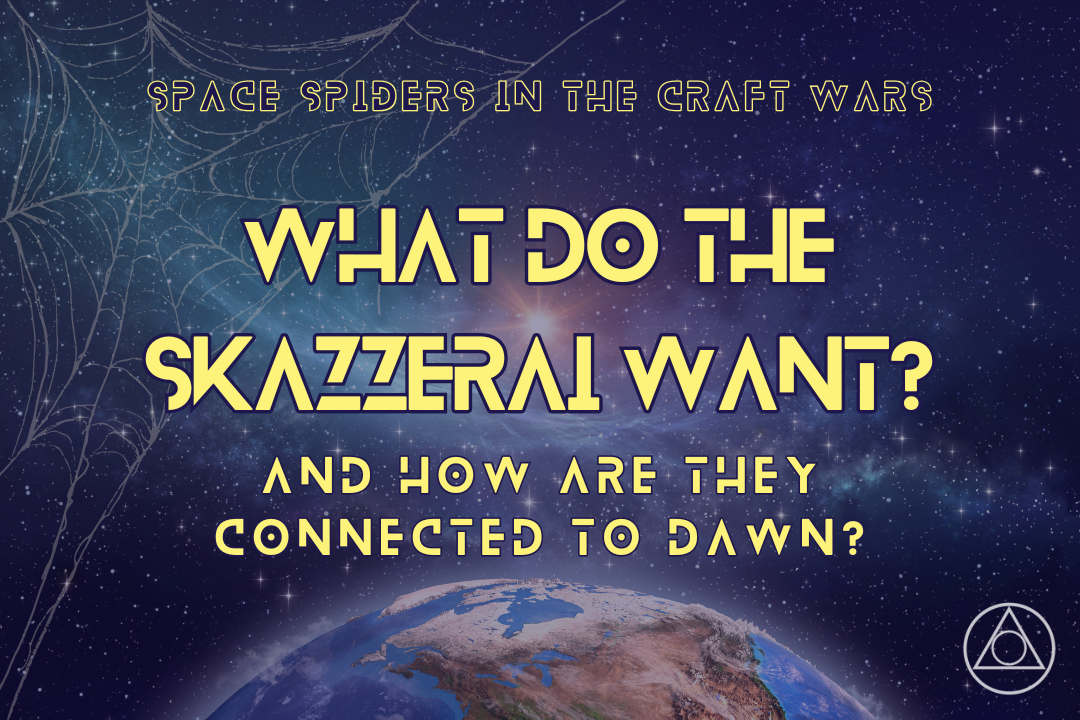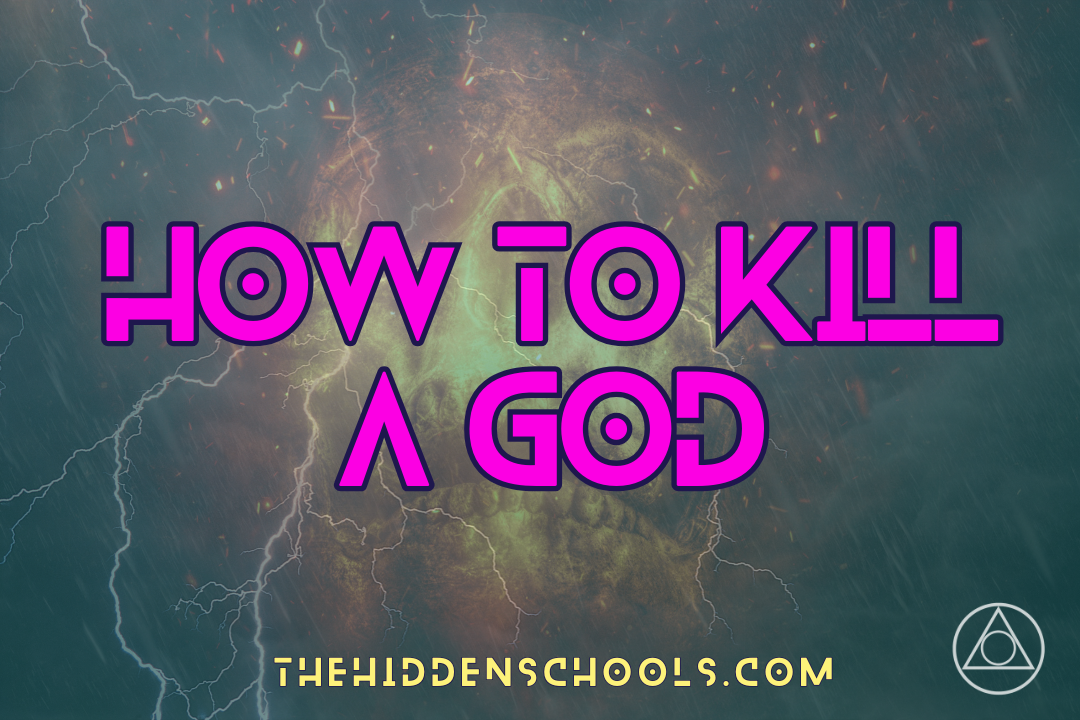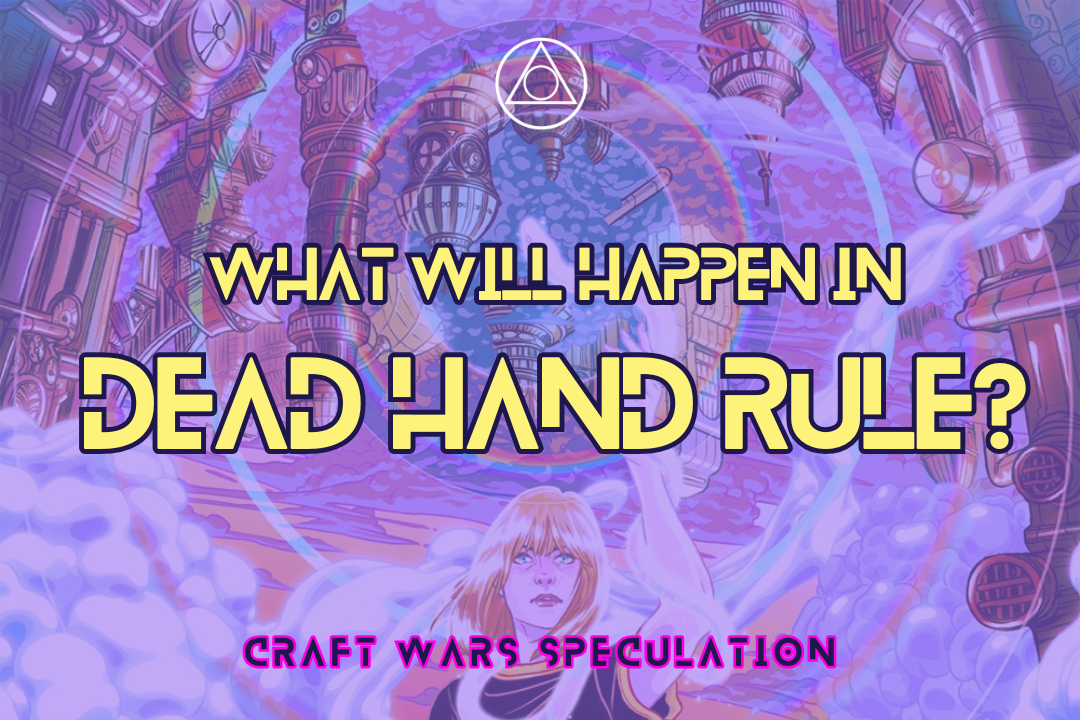The Grimwalds, the Skazzerai, and the last end of the world
A while back I speculated that the Grimwalds - a family of businessfolks with their (literally) shadowy fingers in every (proverbial) pie in the Craft Sequence - were likely to be important in the Craft Wars. You can read the full article here but I can give you a spoiler now: I was right that they’re important, and wrong on every other element.
Well, we can’t win them all.
Let’s dive in to everything we’ve learned since: who - or what - the Grimwalds are, how they’re connected to the skazzerai, and what they know about the end of the world.
Major spoilers for Wicked Problems, so make good choices, dear reader.
What did we learn about the Grimwalds in Wicked Problems?
“She’d never heard of a Grimwald convicted of anything, but they hovered in the background when you read about Craftsmen going down in flames. Legitimate businessmen, people called them, with an emphasis on the first word that no one ever used when talking about, say, a bakery.”
The quote above sums up pretty much everything we knew about the Grimwalds prior to Wicked Problems, but sets the scene rather nicely. Wicked Problems tells us considerably more.
First of all, there’s only one Grimwald.
In my defence, they are explicitly described as a family in previous books - I wonder if Gladstone changed his mind about who they were / he was in the years between the first series and Craft Wars, or whether this was always the plan? - but we learn there is only one, and he is very, very old.
Apologies, that’s the wrong tense. He WAS very, very old. Ancient in fact. But he was definitely killed, and then semi-raised, but then seemingly properly killed, and is by the end of the book, absolutely dead-dead. As far as we know. This is, after all, a series about necromancers.
We don’t see Grimwald alive in this book at all. We find him deceased at the opera, where Tara steals his head and tells Kai (and the reader) that although he is human, he is “not a biologically modern one. Too many muscular attachment points on the jaw” (WP 219). Shenanigans, naturally, ensue, and eventually we reach the Grimwald spire, and discover a memento vivere. I’ll let Tara explain quite what that is.
“Around the chair, in a neat circle, stood twelve chest-high crystal columns. A few of the columns were empty. The others displayed small objects under domes with the rainbow shimmer of demonglass. Artifacts, perhaps: a crude wooden mask; a few slivers of bamboo worked with chicken-scratch writing, not any form of script she could read; a turtle shell, crisscrossed with cracks and soot-smudged. An age-blackened bone–whose and which one, she’d have to ask Tara. In hammered bronze, a small helical statue no bigger than a teacup, two strands of metal twined together, their eyes dull flakes of ancient unpolished gem.
The scene turned inside out as she found concepts to map onto what she was seeing. A divination bone. A Xbel mask from the Southern Gleb. And, of course, the Serpents. The forms she knew, even the oldest forms, were at best distant cousins. Endless generations stretched between them. “A museum?”
Tara shook her head. “Memento vivere.”
She decoded the High Telomeri. “I’m sorry. Why would someone need a reminder of living?”
“It’s theoretical,” Tara said. She examined the chair, prodded its sharper extremities. “I’ve never actually seen one. But this is good for us, I think. Give me the head.”
“Theoretical how?”
“People think of Deathless Kings as an end state of the Craftworker’s progression.” Tara lifted the head, frowned, adjusted a few arms of the chair. “But the oldest of them are barely in their hundred-sixties, and as with naive corpse-botherers of ages past, you can see the strain. The mechanisms that sustain conscious phenomena evolved in tandem with a constant stream of physical feedback, mooring them to time. Without that, things get weird.”
Kai glanced to Shale, who, to her relief, looked as lost as she did. “Tara,” he said gently.
She gestured impatiently with one glyph-glimmering hand. “Breathing, heartbeat, fatigue. Endocrine stimulation. Sexual arousal–the physical experience, not eroticism. Human conscious systems emerge from that stuff. Our bodies wind up our minds, like a child’s toy. Take sex. You can turn yourself on by thinking, but without direct, ah, physical contact–bodies and sweat–it’s like making copies of copies. You get transcription errors. Decay. We have strong preliminary indicators that you can expect two or three centuries maximum before anomalous divergence.”
“You’re saying consciousness is–what, like weight lifting?” Weight lifting was a safe way to think about bodies and sweat. “Without feedback, you make small errors. Your form degrades. You hurt yourself.”
“Yourself, or everyone else. The idea with a memento vivere is to make a vivid imprint on durable objects–intentional, focused. You create a set of guideline conditions, reminders of who you are, why you’re here. What here even means.”
As a Craftswoman, Tara is perfectly positioned to utilise the memento vivere to connect with Grimwald’s consciousness and find out wtf is going on. Kai has to jump in (again, perfectly positioned given her expertise in the Kavekana’ai caldera pool), and we discover quite a bit. To avoid another far too long quote, I’ve summarised here but recommend you go check out the actual section of the book, from page 366 onwards.
Kai sees a whole world before the history she knows - “beings like men, riding great feathered lizards" and “cities that were trees” with “great crystal spheres afloat like soap bubbles in the sky.” This isn’t prehistory as we know it, no scratchings on cave walls. As Kai says “A world it had been, a whole world.”
“And then the spiders came.”
The skazzerai arrived, and the world died in the dark.
Kai is able to talk to Grimwald (before he tries to take over her body) and he tells her more about what the skazzerai are and what they want. You’ll have to wait for the next article to dissect that bit, I’m afraid.
Kai also confirms that Grimwald was there, all those hundreds or thousands of years ago, fighting the skazzerai and constantly losing. “I lost my family. I lost my city. I lost my country and my world. I lost my name. I lost my heart and built myself a new one.” Grimwald “devoured the knowledge of my age, sorceries beyond any miracle you have ever known”, and kept fighting.
Grimwald was dying, then saw the Hero Twins from Quechal scripture sacrifice themselves. Quite what happened - what is myth and what is truth - is uncertain, but they “got a good punch in” and the skazzerai left. He woke up lessened, and found “the leftovers of a dead world.”
He taught them the basics of survival - fire, shelter, agriculture - and helped restart the world. Along with that, he helped the new world forget what happened, finding “pieces of our old war” and hiding them.
Grimwald tried to shape the course of history, preventing a build up of the power and ambition and desire that lead to skazzerai “but the end comes round at last.”
We still don’t know Grimwald’s original name, nor quite how he has survived all these years. All we know is that he was there at the last end of the world and has been fighting to prevent the next. Then came Gerhardt, and the Craft, and the rest is history.
And now he’s dead. His memento vivere is gone. I’d speculate that there might just be a part of him left in the back of Kai’s brain, because that feels like the kind of thing Gladstone would do, but Grimwald himself? Gone.
Murdered. Taken out, by those who WANT the skazzerai to come and eat the planet.
Grimwald and the spirecliffs
We’ve seen that Grimwald fought the skazzerai last time, and he’s been taken out before they come next time. But he has a bit of a closer connection: the spirecliffs.
The spirecliffs are a supernatural disaster off the coast of Southern Kath, being kept kind of in check by the goddess Ajaia and Caleb Altemoc’s Two Serpents Group. And this time I did need the super long quote rather than a summary:
“Below, thousands of cables thick as a weight lifter’s thigh spanned the gaps between the cliffs. They were not anchored to the rock–rather they plunged through its surface, and from their points of contact a rainbow-black metallic sheen spread gangrenous through the stone. The cables joined with other cables in the gaps, to form a network densely crosslinked, converging on the golf ball ahead.
“I had been told,” Jax said, “that the Coast Guard was able to slow the local transformation.”
“Slow, yes. Not stop. The Coast Guard encountered the anomaly first. They lost a lot of boats and a lot of sailors in not a lot of time. This is the goddess Ajaia’s territory. When they prayed for help, she answered. You see those root structures? Those are hers, trying to stop the web.”
“Yet the roots appear to be made of the same substance as the cables.”
“They were infiltrated,” Caleb said. “Like the rocks.”
“Infiltrated?”
“We prefer it to ‘transformed’, which makes it sound as though the underlying substance changed–lead into gold. But when you look close–microscope close–you see that most of what used to be there still is: rock, silica, vegetation. But it’s all been repurposed. Cells have been invaded by nanostructures–tiny bits of clockwork–and reorganised, to some purpose we don’t yet know.” He swept one hand over the splintered landscape. “This area used to be grazing land. Ajaia broke it into cliffs to slow the conversion. You can see, there, there”—pointing–“bit of rock she couldn’t save. All that iridescent grey. They look solid, but they’re a mass of tiny structures.”
“They appear to be…breathing.”
“It does look like that, doesn’t it? Autonomic processes, cut off from the core. They try to convert the air. We contain them with negative-pressure wards. The edges have a light-bending effect, which accounts for the weird geometry.”
“And they’re floating.”
“Ajaia again. We think she did it to protect the ocean, or the planet’s crust.”
“You think?”
“She doesn’t talk to us. Doesn’t talk to anyone these days except her high priests. We’re pretty sure she’s alive–if she wasn’t, we assume the…process would start again. But it must take an enormous share of her power to hold it in check. Most of it concentrated right here.”
They had reached the bridge to the golf ball.
It looked impossible. Even Caleb, who had grown up beneath the skyspires of Dresediel Lex, felt the wrongness of it.
That was why he called it a golf ball. To stay sane.
The roots made it worse. If there had just been an immense gnarled sphere of wood and metal and stone hovering in midair, his brain would have thought, Oh, magic, and switched off, like it did when Craftsfolk started talking about penumbras and strict scrutiny. But instead there was an immense gnarled sphere of wood and metal and stone supported by hair-thin roots that could not possibly bear so much weight.
Wind whipped through the spirecliffs. The cables sang an alien melody. Far below, the ocean churned. Some scholars thought the maelstrom was a response to the energies inside the gold ball, some that it was a natural formation of tides and currents warring through the spirecliffs. Caleb did not like to look at it. It reminded him that no matter how lifeless this coast might seem, two titanic forces wrestled here in deadly balance. And he’d been hired to help one of them cheat.
...
“And all this,” Jax said, behind him, “began with one shipwreck.”
“A container ship out of Sin Calavan bound north to Alt Selene, carrying everything and anything you can put in a shipping container. Rice, children’s toys, mass-produced glyphwork contraptions, ullamal championship jerseys. And one stasis-locked container listed on the manifest as ‘meteorite’.”
“Indeed.”
“We don’t know who was moving the thing. An agent hired by an agent hired by a Concern hired by another Concern funded by a Kavekanese idol. And you know how Kavekana is about privacy. Anyway, the shop ran into a cauldron storm. Crashed into the cliffs here. The crash must have broken the stasis lock. Things happened fast after that. The ‘meteorite’ infiltrated the container, then spread to toys, rice, crew. Anything dead, it turned. Anything living, it ate. Then it burrowed into the cliffs. The Coast Guard set a ten-mile cordon, fell back. Someone prayed to the goddess. And, well, here we are.”
So, some secretive shadowy person or corporation was shipping a ‘meteorite’ (which is later confirmed to be a piece of skazzerai iron), which when shipwrecked destroyed miles of coast and has locked a powerful goddess in constant battle for the years since.
Kai is called in as the Kavekanese representative of ‘Star Apple’, the shell corporation that had been shipping the meteorite. It was she who first retained the Two Serpents Group to try and prevent further destruction, and she is brought in when the spirecliffs collapse after Dawn steals the meteorite / skazzerai shard. Kai can’t say much about her client due to complicated magical nondisclosure agreements:
“It was being transported by a Concern named Pallas Logistics, registered in the Ebon Sea. Pallas’s ownership structure was quite complicated, but ultimately it was a subsidiary of a Kho Khatang holding company that was itself sixty-two percent owned by a Kavekanese god, called Star Apple. My faithful have never clarified the shard’s meaning or history, and its point of origin was never established. Refusing to provide that information was one of the terms of our settlement.”
“But they were shipping it,” Tara said. “Which means they knew how to contain it.”
“They did not share any of that information with Mr Altemoc’s team. Divine remediation, they said, would be effective. And it was. Until recently.”
“Who is Star Apple? Or Pallas?”
She looked away. “I can’t say. … My oath of nondisclosure is a precept of the faith. Those parts of my memory don’t exist even for me. That applies to my dreams, too, before you get any bright ideas about tying me to a chair. I don’t know where the shard came from. I don’t know who I’m working for.”
I probably didn’t need to include that quote in its entirety, but I enjoy the explanation.
Despite Kai’s oath of nondisclosure, she IS able to retain Tara’s services and thus bring her to said anonymous client. At the Opera House, in Chartegnon. Where he is then found dead.
Which means that Grimwald, who has been desperately trying to prevent “pieces of our old war” from falling into other hands, for some reason decided to ship one of those pieces on a commercial freighter. When the shard infiltrated Ajaia and her lands, he essentially funded the Two Serpents Group to maintain the cliffs - but to what end?
I don’t have an answer. The only theory that makes sense to me is that perhaps I’ve misread the text, and somebody else was shipping it then Grimwald stepped in to help. Tara says to the Grimwald memento vivere, “You helped the Iskari in the God Wars. You saved Kos and Seril. You caught that shard in the spirecliffs, before any of us knew what we were fighting” (WP 364).
She’s saying he CAUGHT the shard, not that he was responsible for the spirecliffs themselves. In the convoluted structure Kai describes above, was there in fact a totally different player who had and then shipped the meteorite, perhaps causing the shipwreck on purpose? We know Grimwald has worked with Kai and the Kavekanese priesthood before - specifically on Seven Alpha, the Blue Lady’s somewhat predecessor - so did he use his shadowy power to claim responsibility and help clear it up?
But if Grimwald didn’t actually ship the shard, or cause the disaster, who did? And why?
What do you think? Let me know - and don’t forget you can subscribe to be the first to hear about new articles and fun projects in the pipeline. Like what we do here? Tips welcome on ko-fi to help pay for the site!








